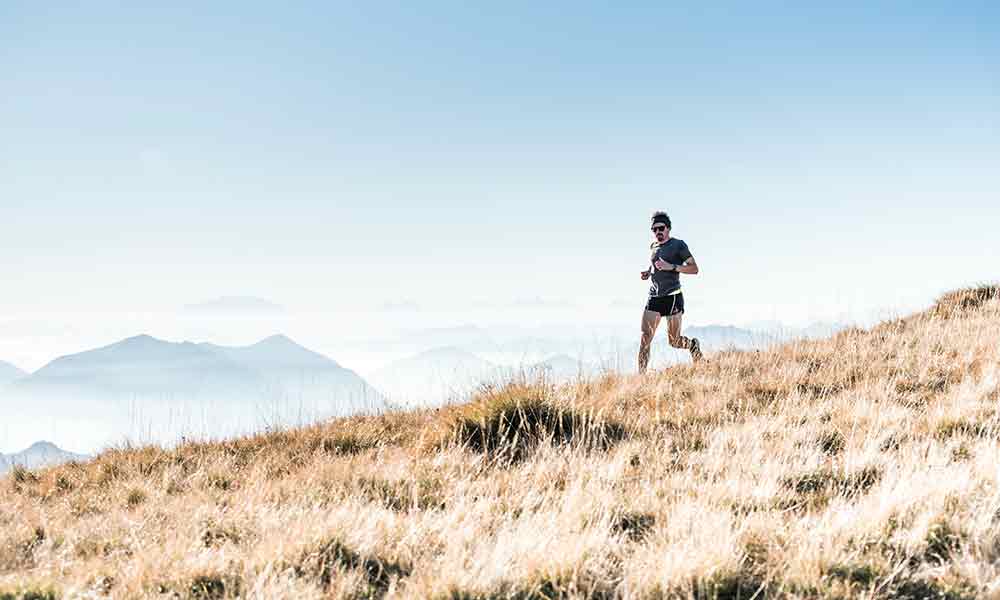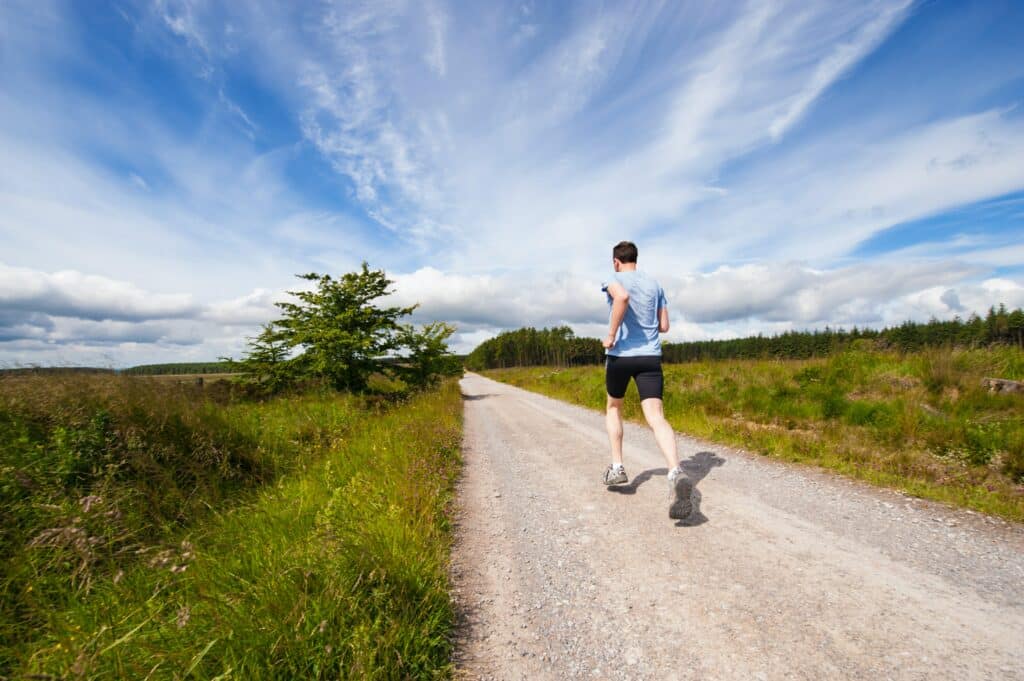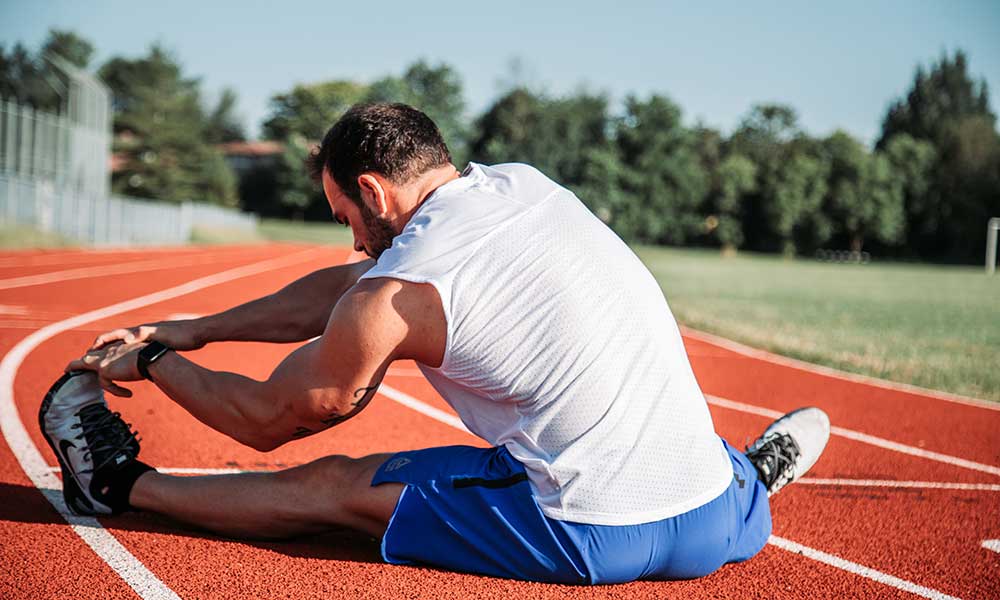There are a lot of reasons people get into trail running. Some are looking for a new challenge and new ways to push their bodies after years of road running. Some love nature and love the trail runs to connect with the earth, themselves, and to experience peace. Others have never practiced road running or trail running before and are curious about this sport and wonder if it may be for them.
Whatever your reasons for becoming curious about trail running, you’ve come to the right place to get started with this incredibly rewarding activity that goes beyond a mere cardiovascular exercise.
Getting out on the trail activates your brain, improves your balance and gives you a chance to connect with nature and explore your natural spaces in a different way. The changes in terrain and elevation will also increase your ankle strength as you hop on and off of rocks, negotiate rugged and technical terrain. You will see improvement in your overall leg strength and cardiovascular health as well.
So how do you become one of the over 1.77 million trail runners around the world? These trail running tips will help you get yourself out on those dirt trails and enjoy all the wonderful benefits that come along with running trails.
How Do I Start Trail Running?
Start Small
The most important thing about starting trail running is just getting out there and doing it. You may feel overwhelmed by needing to purchase all the right gear before getting started, but that isn’t necessary at all.
For the first few runs, just get out there and see how it feels. If it feels like something you want to continue with, then the options for trail-running shoes, clothes, hydration systems and mid-run nutrition products like gels and bars are nearly endless and you can take your time finding the right trail running gear to meet your needs at every step during your training.
Find Trails
Sometimes it’s helpful to find a place you want to run first, so you can begin envisioning what your first trail run will look like. Start with a trail that is close to home. Undulating trails are a great place to start, giving you opportunities to run uphill and also providing downhill training as well as some flat spaces to help you catch your breath.
If you have a trail in mind that is really difficult, you can start there, even if it is hard. Break it up into sections and take it piece by piece over many trips. There are several trail tracking apps and websites out there where trail runners can post their routes so you can find trails to try.
Set A Goal
Everybody has a different reason for wanting to begin trail running, but sticking with it is the hard part. One of the best ways to keep yourself motivated is to pick a goal that you aspire to. Trail races are a great way to start as it gives you a very specific goal and date.
Or maybe you were out hiking on a trail and ran into a group of trail runners. Trail running can be hard and gains can be slow. Some days you’ll get out there and feel on the top of the world and other days it will be all you can do to put one foot in front of the other.
Keep Realistic Expectations
If you’ve done road running in the past, running 5 miles on the pavement is not the same as running 5 miles on the trail. That same distance may take an hour and a half instead of 45 minutes, which is significant in terms of time under tension, hydration and nutrition. When you choose your trail, you may not make it to the end the first time. It is important to choose a realistic time objective for those first runs, rather than a distance.
Due to the uneven terrain, uphill climbs and descents, you may not be able to get into that normal road running pace that you’re used to. Don’t worry about hitting that 8-minute mile on a trail, focus on continuing to move and meeting your goal for that day.
If you’re not used to running at all, and you’ve decided to start from nothing, start with running on the trail for 10 minutes. When that 10 minutes feels good, go to 15. These increases won’t happen on a schedule, some days you’ll be trudging and other days you’ll be bounding up the trail.
Be Prepared
Good preparation in your trail running gear is key to your success out there on the trails. Trail runners all have their favorite brands and styles of gear for trail running, so finding the right fit for you will require some trial and error, and conversations with other trail users in your area. Here is a general guide to some of the gear you may want to consider for running trails.
Footwear For Trail Running
At this point, you don’t need to have all of the right gear, but there are a few essentials. If you don’t have specific trail shoes, a good pair of supportive running shoes will go a long way to your success in getting started, even if they are technically road running shoes.
If you don’t have any running shoes at all, head down to your local running shoes or sporting goods store and have the professionals fit you and talk you through the right trail-running shoes for you. Oftentimes, these shops will have last year’s models on significant discount so you can get going without a huge financial commitment.
Proper, well-fitting, trail-running shoes will help you to build confidence in your footing when dealing with uneven ground and loose rocks when you’re ready to take the next step in your trail running journey.
Hydration
It can’t be stressed enough how important hydration—before, during and after your run—is to your success as a trail runner. This is vital as you may sweat more and expend more energy than you are used to. About two hours before your run, aim to drink about 2 cups (16 ounces) of water with a light meal or snack.
Plan to bring some water with you on your run so you can drink water at regular intervals, especially if you plan to be out for longer than an hour. You will also be expending calories and need to replenish your electrolytes. There are many different types of gels, tablets and bars all designed to help you run your very best.
For your first trail run, you may be able to just carry a small bottle of water in your hand, but once you become hooked, a hydration system will be integral to your success. You can find hydration packs, belts or vests when you’re ready to make that leap. Each one has its own advantages and will depend on your unique needs and preferences.
After your run, make sure to keep drinking water and eat fruit, which is also a great and healthy source of water and fiber.
Clothing
The most important thing to remember when choosing your trail running outfit is to wear comfortable, well-fitting clothes that are adequate for the terrain and weather you may encounter during your trek. There’s nothing like getting caught in a cold, windy rain storm when you’re only wearing shorts and a t-shirt.
If you live in a place with sudden changes of weather, bring clothing that is suitable to protect you if that happens. Or if you’re going to be running on an overgrown trail, you may consider wearing pants and long sleeves to keep you protected from getting scratched by sharp brush.
Sunscreen
You will be spending a good amount of time on the trail and protection from the sun is important. The American Academy of Dermatology recommends that you protect yourself with a sunscreen of 30 SPF or higher. Look for a sunscreen that is resistant to sweat and doesn’t run into your eyes. Sunscreen sticks are very popular and can be applied during your run, even when you’re covered in sweat to offer renewed skin protection. You may even want to wear a hat to keep the hot sun from beating down on your head and face for the duration of your trail run.
Navigation
Before you head out for your run, make sure you have a good grasp of the geography of the trail, to avoid getting lost. Some smart watches have mapping features or if you’re in a place with cell coverage, your phone can be helpful.
If your phone is not a reliable option, consider bringing a trail map. You may even want to make a plan to come out and hike the trail before attempting your trail run to avoid getting lost or any other unwanted surprises.
It’s OK To Walk
A major part of trail running is actually walking. There are some terrains you will just not be able to run, whether climbing uphill or descending. Or, your legs and lungs will be burning with your heart pounding out of your chest on a climb that you just have to stop running. And that is OK! Even experienced trail runners walk. Just try to keep moving, focus on deep breaths that get your heart rate under control so you can recover.
Try power walking up that really steep climb rather than exhausting all of your energy trying to run it. In many cases, you’ll be moving faster by hiking quickly rather than attempting to keep running.
Pay Attention
Trail running is a lot different than running on the road. It’s often hard to get into that even rhythm as you’re dealing with uneven terrain and rocks or roots are trying to trip you up at every turn. Keep focused on your feet and plan your steps. You don’t want to twist an ankle, and it happens to the most experienced trail runners. It’s that one moment where you lose your focus that you take an awkward step.
Running on trails often affords incredibly beautiful and peaceful views. Take your time to enjoy it, which means stopping to look at the landscape around you. Use these stops to recover, grab a sip of water or a bite of something, then refocus and get moving again.
How Do I Get In Shape For Trail Running?
Trail running will end up relying on your muscles in a different way that road running will. So, apart from the training of actually running, strength training is an important element to consider. Proper strength training is the key to avoiding injuries and staying out there on the trail and to be able to go farther, longer and faster. Even 30-45 minutes is enough.
Your glutes, calves and hamstrings will help get you up those hills while providing you balance and stability throughout the course of your run. Your quadriceps are absolutely necessary for the downhill portion of your run, to help keep you on a steady pace and not merely flailing down the hill on momentum.
For these reasons, it is important to work in strength training to keep all these muscles strong as well as strengthening your core. Some highly effective exercises are squats, lunges, pistol squats, planks, side planks, jumping jacks, single-leg deadlifts, and even burpees—as terrible as they may seem. This list is nowhere near exhaustive, but all of these things can be done with body weight—meaning you don’t need any additional equipment to get started. Resistance bands and kettlebells can help you increase your strength as you progress.
Another element of trail runs is elevation gain. If your goal is a trail race and it will be at a higher elevation than you are used to, take some time to train at that elevation. Whether it’s a week before your trail race or in the months prior, you will need to get acclimated and accustomed to running steep hills at elevation.
You may find it helpful to join a trail running group in your community to have the camaraderie of others or follow a specific trail running training plan that includes at least two days of strength training. You might even consider a personal trainer to create a strengthening plan specific to you and your goals. There are even running coaches that can help you with your trail running form and technique.
Is Trail Running Harder Than Road Running?
The truth is that road running and trail running are just really different. There is a perceived difficulty to trail running but some of that is just perception. Both can be great exercises and they each have their different difficulties.
For instance, running on paved surfaces like asphalt or cement is incredibly unforgiving on your joints and can lead to longer recovery times. Trail running, on the other hand, takes place on natural surfaces which are more gentle on your joints, meaning that you can often go longer without feeling the same pains and fatigue.
With that said, trail running does require a different set of muscles to work and you will need to be focused at all times on the terrain to avoid falling or spraining an ankle. But what you will gain with trail running is something that typical road running can’t offer.
Running on the roads or sidewalks can often be gray and uninspiring—whether you’re running through a busy city with lots of traffic, noise pollution, and just regular pollution or through the suburbs past houses. Now, this isn’t bad, and sometimes it is a really fun way to discover a new city or your own city, but with a busy lifestyle, sometimes you need to escape the noise. And trail running can provide that.
You can cruise through the countryside, around a lake, or up a steep mountain trail listening to the nature surrounding you and stopping from time to time to take a deep, cleansing breath and soak in the beautiful world. Many experienced trail runners experience a greater sense of peace in their lives from the time they spend out in nature challenging themselves.
So, while trail running may require you to work a little harder than you’re used to and develop new muscles, it is kinder on your joints and may be the peaceful escape that you’re looking for, while getting in shape.
The Time Is Now
The only way to gain trail running experience is to get out on those trails. After reading this article, you now know how to start trail running. Take a moment to find a trail, gather your necessary gear, and get those running shoes laced up. The time for you to begin your trail running journey is now. Happy trails!







